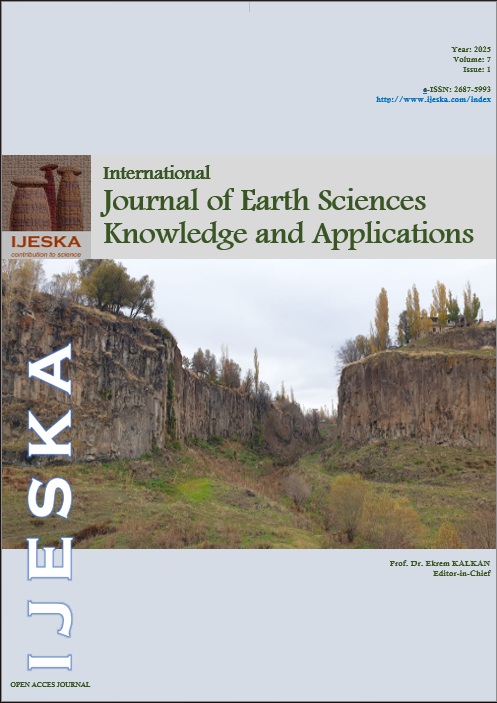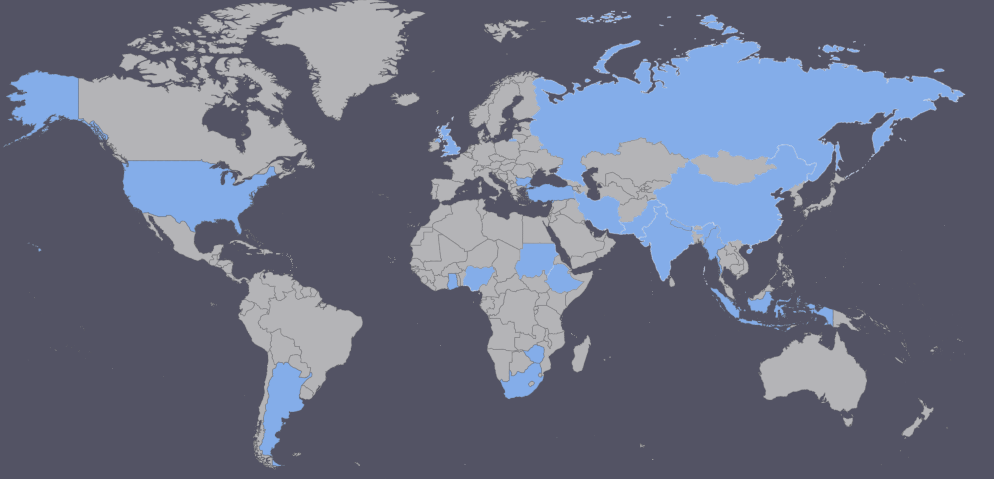Effects of Soil Erosion on Water Resources in Slopy Mountainous Areas of Afghanistan and Soil Attrition Control Strategies
Keywords:
Soil conservation methods,, Groundwater, Mountain areas, Surface water, groundwaterAbstract
In the research reported here, we have investigated various kinds of soil erosions in the mountain slope areas in certain parts of Afghanistan. Due to arid conditions, soil erosion represents a major issue in terms of groundwater drawdown and soil cover for infiltration countrywide. The main objective of this research is to study different methods for controlling soil erosion. It is well known that Afghanistan is a mountainous country, and there is more soil located in the slopy mountain areas of the bedrock, and all of these soils become bare without vegetation, during precipitation during the rainy seasons, since soils from surfaces (aquifer layers) are leached from the ground surface and are transported to the plain areas. In this case, the bedrock is exposed to the ground surface, and the precipitation does not infiltrate to bedrock's aquifage layers. This poses a serious problem in Afghanistan since there is no vegetation cover and the entire soil is transported by season floods during the rainy seasons. To control this natural calamity, it is necessary to use a variety of methods to prevent soil erosion during natural events. Certain methods, such as terraces, retaining walls, protection walls, turfing, tree and shrub planting, dry stone masonry, crib wall, gabion wall, reinforced earth wall, pile and tie back walls, toe walls, revetment walls, check dam, surface drainage, stone pitching, prop wall and dentition wall, wattle fence, wire net, tree, and grass planting are used, however, it requires a careful assessment that depends upon the terrain, local conditions, and slopes. The report provides a comprehensive review of different methods used to prevent soil erosion to increase vegetation and prevent soil erosion and runoff in the different mountain areas of Afghanistan. Since soil is a blessing to sustain life, this study is critical to protect this natural resource for the society of the country.
References
Arian, H., Kayastha, R. B., Bikas, C. B., Ahuti, S., Rasouli, H., Armstrong, R., 2015. Application of the Snowmelt Runoff Model in the Salang River Basin, Afghanistan Using MODIS Satellite Data. Journal of Hydrology and Meteorology, 9(1), SOHAM, Nepal. https://doi.org/10.3126/jhm.v9i1.15586
Biswas, T.D., Mukherjee, S.K., 1994. Textbook of soil science, second edition. Tata McGraw Hill Education Private Limited: New Delhi.
Hilger, T. et al. (2013). Soil Conservation on Sloping Land: Technical Options and Adoption Constraints. In: Fröhlich, H.L., Schreinemachers, P., Stahr, K., Clemens, G. (eds) Sustainable Land Use and Rural Development in Southeast Asia: Innovations and Policies for Mountainous Areas. Springer Environmental Science and Engineering. Springer, Berlin, Heidelberg. https://doi.org/10.1007/978-3-642-33377-4_7
Kumar, P. (2024). Soil Conservation for Global Sustainability. In: Kulkarni, S., Haghi, A.K. (eds) Global Sustainability. World Sustainability Series. Springer, Cham. https://doi.org/10.1007/978-3-031-57456-6_6.
Li, H., Tang, J., Wang, J., Qiao, J., & Zhu, N. (2024). Long-Term Conservation Agriculture Improves Soil Quality in Sloped Farmland Planting Systems. Plants, 13(23), 3420. https://doi.org/10.3390/plants13233420
Niard, N., 2005. Hydrogeology of Kabul Basin Part III: Modelling approach Conceptual and Numerical Groundwater Models. Available from: https://www.bgr.bund.de/EN/Themen/Wasser/Projekte/abgeschlossen/TZ/Afghanistan/hydrogeology_kabul_basin_3.pdf?__blob=publicationFile&v=3
Rasouli, H., Belhassan, K., Vaseashta, A., 2024. Hydrogeological Investigations of Paghman Valleys in Kabul, Afghanistan. Advances in Geological and Geotechnical Engineering Research. 6(1): 1–20. DOI: https://doi.org/10.30564/agger.v6i1.6203
Rasouli, H., Vaseashta, A., 2023a. Groundwater Quality Assessment in Pul-e-Charkhi Region, Kabul, Afghanistan. Advances in Geological and Geotechnical Engineering Research. 5(4): 1-21. DOI: https://doi.org/10.30564/agger.v5i4.5949
Rasouli, H., Vaseashta, A., 2023b. Investigation of Physicochemical Properties of Qalay Abdul Ali Soil, Kabul, Afghanistan. Advances in Geological and Geotechnical Engineering Research. 5(3): 55-68. DOI: https://doi.org/10.30564/agger.v5i3.5773
Tünnemeier. Torge. Dr. Houben. George. 2005. Hydrogeology of Kabul Basin Part 1, Geology, Aquifer characteristics, climate, and hydrography (BGR). Kabul. Afghanistan. 67-72 pp. 25.
Urbano, L., Waldron, B., Larsen, D., et al., 2006. Groundwater–surface water interactions at the transition of an aquifer from unconfined to confined. Journal of Hydrology. 321(1-4), 200-212.
Rasouli H., 2021b. Analysis of Groundwater Quality in Jabal Sarage and Charikar Districts, Parwan, Afghanistan. Journal of Geological Research, volume03, Issue 04. October 2021.Open Access, Online Journal Available 45-55. DOI: https://doi.org/10.30564/jgr.v3i4.3717. Research (IJSR), Vol. 6(10), Oct. 2017, India. DIO10.21275/ART20177497.
Vaseashta, A. (2022). Future of Water: Challenges and Potential Solution Pathways Using a Nexus of Exponential Technologies and Transdisciplinarity. In A. Vaseashta, G. Duca, & S. Travin (Eds.).
Rasouli, H., 2020. Well design and stratigraphy of Sheerkhana Deep Well in Chak District, Wardak, Afghanistan. International Journal of Geology, Earth & Environmental Sciences. 10(2), 54-68.
Rasouli, H., Kayastha, R.B., Bhattarai, B.C., et al., 2015. Estimation of discharge from Upper Kabul River Basin, Afghanistan using the snowmelt runoff model. Journal of Hydrology and Meteorology. 9(1), 85-94.DOI: https://doi.org/10.3126/jhm.v9i1.15584
Rasouli, H., Quraishi, R., Belhassan, K., 2021. Investigations on river sediments in Chak Sedimentary Basin, Wardak Province, Afghanistan. Journal of Geological Research. 3(4), 21-29. DOI: https://doi.org/10.30564/jgr.v3i4.3574
Rasouli, H., 2022. Climate change impacts on water resources and air pollution in Kabul Sub-basins, Afghanistan. Advances in Geological and Geotechnical Engineering Research. 4(1), 11-27.
Rasouli, H., Vaseashta, A., Hamdard, M.H., 2023a. Sedimentological study of Chack Hydropower Reservoir, Wardak, Afghanistan. International Journal of Earth Sciences Knowledge and Applications. 5(1), 21-32.
Rasouli, H., Vaseashta, A., Belhassan, K., 2023b. Mechanical analysis of Khair Abad Village, Surskhrud District, Nangarhar Province, Afghanistan. International Journal of Earth Sciences Knowledge and Applications. 5(1), 103-120.
Rasouli, H. and Safi, A. G., 2021a. Geological, Soil and Sediment Studies in Chelsaton Sedimentary Basin, Kabul, Afghanistan. International Journal of Geosciences, 12, 170 – 193. https://doi.org/10.4236/ijg.2021.12201120
Rasouli, H. Sarwari, M. H., Khairuddin, R., Said, A. H.,2020a. Geological Study of Tangi Mahipar, Mountain Range along Kabul Jalalabad Road, Afghanistan. https://doi.org/10.4236/ojg.2020.1010044
Rasouli, H., 2020b. Application of soil physical and chemical parameters and its Comparison in Kabul Sedimentary basins, Kabul, Afghanistan. https://doi.org/10.24327/ijrsr.2020.1102.5095.
Rasouli, H., 2019.A Study on Some River Sediments, Hydrology and Geological Characteristics in Chak Sedimentary Basin, Wardak, Afghanistan. International Journal of Geology, Earth & Environmental Sciences, ISSN: 2277-2081, and Open Access, Online International Journal Available at http://www.cibtech.org/jgee.htm Vol.9 (2) May-August, pp.49- 61.
Rasouli, H. Shamal, S., 2018. Comparison between, EC, CaCO3, and mechanical analysis of Qala Wahid and Company Areas soil, Kabul, Afghanistan. International Journal of Science and Research, 8(5), May 2018. https://doi.org/10.21275/ART20197318
Rasouli, H., 2022b. Methods of Well Construction Complication, Design, and Development for Sixteen Observation and Test Wells at the Eight Locations of Zarang district, Nimroz, Afghanistan. International Journal of Earth Science Knowledge and Applications (2022) 4(3) 426-448.
Rasouli, H., Shamal, S. and Sarwari, M.H. (2021) Geological Study of Dasht-e-Top Sedimentary Basin, Wardak Province, Afghanistan. International Journal of Geosciences, 12, 531-540. https://doi.org/10.4236/ijg.2021.126029
Rasouli, H., Vaseashta, A., Hadard, H. 2023. Study of Physicochemical Properties of Soil at Qargha Dam Areas In Paghman District, Kabul, Afghanistan. International Journal of Earth Sciences Knowledge and Applications. journal homepage: http://www.ijeska.com/index.php/ijeska
Touhami, D. et al. (2024). Soil Conservation Approaches, Tools, and Techniques. In: Ogwu, M.C., Izah, S.C., Dessureault-Rompré, J., Gasparatos, D. (eds) Sustainable Soil Systems in Global South. Springer, Singapore. https://doi.org/10.1007/978-981-97-5276-8_17
Vaseashta, A., Duca, G., Culighin, E., Bogdevici, O., Khudaverdyan, S., Sidorenko, A. 2020. Smart And Connected Sensors Network for Water Contamination Monitoring and Situational Awareness. In: Sidorenko, A., Hahn, H. (eds) Functional Nanostructures and Sensors for CBRN Defence and Environmental Safety and Security. NATO Science for Peace and Security Series C: Environmental Security. Springer, Dordrecht. https://doi.org/10.1007/978-94-024-1909-2_20
Vaseashta, A. (2015). Life cycle analysis of nanoparticles: Risk, assessment, and sustainability. ISBN: 9781605950235, Lancaster, Pennsylvania, DEStech Publications, Inc.
Vaseashta, A., Ivanov, V., Stabnikov, V., Marinin, A. (2021). Environmental Safety and Security Investigations of Neustonic Microplastic Aggregates Near Water-Air Interphase. Polish Journal of Environmental Studies, 30(4), 3457-3469. https://doi.org/10.15244/pjoes/131947
Vaseashta, Ashok, Hafizullah Rasouli and Mohan Bahadur Chand “Hydrogeological Investigation of Six Asiab Regions in Wardak Province of Afghanistan.” Hydrol. Current Res 14 (2023c): 477.
Downloads
Published
Issue
Section
License
Copyright (c) 2025 Ashok Vaseashta, Hafizullah Rasouli

This work is licensed under a Creative Commons Attribution-NonCommercial-NoDerivatives 4.0 International License.
The authors keep the copyrights of the published materials with them, but the authors are aggee to give an exclusive license to the publisher that transfers all publishing and commercial exploitation rights to the publisher. The puslisher then shares the content published in this journal under CC BY-NC-ND license.



